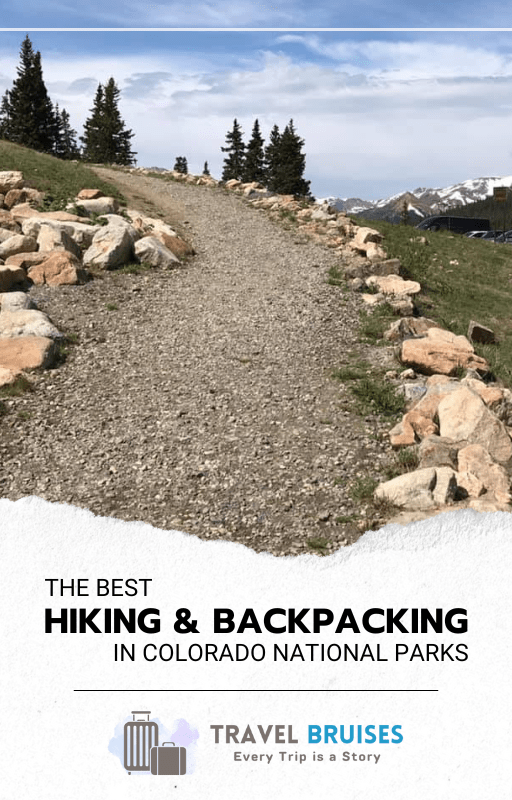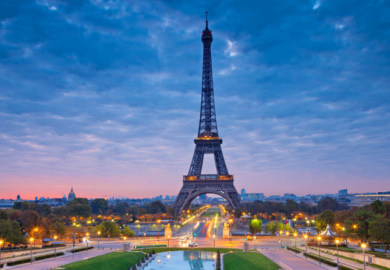Table of Contents
As a passionate stargazer, I have always been captivated by the mesmerizing beauty of the night sky. There is something truly magical about gazing up at the stars and feeling a sense of wonder and awe. If you share the same fascination, then you must explore the world of Dark Sky Parks.
What is a Dark Sky Park?
These protected areas offer the perfect opportunity to escape the city lights and immerse yourself in the celestial wonders above. In this guide, I will take you on a journey to discover the enchanting beauty of Dark Sky Parks and provide you with all the information you need to plan your ultimate stargazing adventure.
The Importance of Dark Sky Preservation
Before we delve into the wonders of Dark Sky Parks, it is essential to understand why these protected areas are so crucial for preserving the night sky. Light pollution, caused by excessive artificial lighting, has become a significant threat to our ability to see the stars. The glow from cities and towns drowns out the natural darkness, making it difficult to observe celestial objects. Dark Sky Parks play a vital role in combating light pollution by providing designated areas where the night sky remains untouched by artificial light. By preserving these dark skies, we not only protect our ability to stargaze but also safeguard the habitats of nocturnal animals and preserve the natural balance of ecosystems.
Preserving the darkness of the night sky also has a profound impact on human health and well-being. Studies have shown that exposure to natural darkness and the stars above can reduce stress, improve sleep patterns, and enhance overall mental well-being. Dark Sky Parks offer a sanctuary away from the hustle and bustle of city life, allowing visitors to reconnect with nature and experience the tranquility of the night.

Benefits of Visiting Dark Sky Parks
Visiting a Dark Sky Park offers a plethora of benefits for stargazers and nature enthusiasts alike. One of the most obvious advantages is the opportunity to witness the night sky in its full glory. The absence of light pollution in these protected areas allows for a clear and unobstructed view of the stars, planets, and other celestial wonders. Imagine lying on a blanket under a blanket of stars, watching meteor showers streak across the sky, and identifying constellations with ease. Dark Sky Parks offer an unparalleled experience for both seasoned stargazers and those venturing into the world of astronomy for the first time.
Beyond stargazing, Dark Sky Parks also offer a chance to connect with nature on a deeper level. These parks are often located in remote and pristine locations, away from the noise and distractions of modern life. As you explore the park during the day, you can revel in the beauty of untouched landscapes, observe wildlife in their natural habitats, and engage in a variety of outdoor activities such as hiking, camping, and wildlife spotting. Dark Sky Parks provide a holistic experience, combining the wonders of the night sky with the serenity of nature.
Tips for Planning a Trip to a Dark Sky Park
Now that you are eager to embark on a celestial adventure, let’s dive into some essential tips for planning a trip to a Dark Sky Park. Firstly, research and choose a Dark Sky Park that aligns with your interests and preferences. Consider factors such as the park’s proximity to your location, the best time of year for stargazing, and the availability of accommodations and amenities. Some Dark Sky Parks offer guided tours and educational programs, which can enhance your experience and provide valuable insights into the night sky.
Next, make sure to check the weather conditions before your trip. Clear skies are essential for optimal stargazing, so aim for a night when the weather forecast predicts minimal cloud cover. It is also advisable to pack warm clothing, even during the summer months, as nighttime temperatures can drop significantly in Dark Sky Parks. Additionally, bring a red-filtered flashlight to navigate the park without disturbing your night vision and a comfortable camping chair or blanket for stargazing sessions.
Lastly, remember to respect the rules and regulations of the Dark Sky Park you visit. These parks have strict guidelines to ensure the preservation of the night sky, such as limiting the use of artificial lights and prohibiting certain activities that may disrupt the natural environment. By adhering to these guidelines, you contribute to the conservation efforts and help maintain the pristine beauty of the park for future generations to enjoy.

10 Best Dark Sky Parks Around the World
Dark Sky Parks can be found in various locations around the world, each offering its unique celestial wonders. Here are some of the best Dark Sky Parks that are worth adding to your stargazing bucket list:
- Natural Bridges National Monument, Utah, USA: Renowned for its incredible natural rock bridges, this park also boasts some of the darkest skies in the United States. With minimal light pollution and breathtaking landscapes, it is a haven for stargazers and astrophotographers.
- Galloway Forest Park, Scotland: Located in the heart of Scotland, Galloway Forest Park was the first Dark Sky Park in the UK. Its remote location and low population density make it an ideal spot for stargazing. The park even offers a designated stargazing area with telescopes for public use.
- Aoraki Mackenzie International Dark Sky Reserve, New Zealand: Situated on the South Island of New Zealand, this reserve is the largest Dark Sky Reserve in the world. With its crystal-clear skies, it offers unparalleled views of the Southern Hemisphere’s celestial wonders, including the Southern Cross and the Magellanic Clouds.
- NamibRand Nature Reserve, Namibia: Known for its vast desert landscapes and stunning dune formations, NamibRand Nature Reserve is also a designated Dark Sky Reserve. The combination of the desert’s stark beauty and the brilliance of the night sky creates a truly awe-inspiring experience.
- Jasper National Park, Canada: Nestled in the Canadian Rockies, Jasper National Park is not only a UNESCO World Heritage Site but also a Dark Sky Preserve. Its remote location and minimal light pollution make it an excellent destination for stargazing and astrophotography.
- Cherry Springs State Park – Pennsylvania, USA Located in the United States, this park is known for its exceptionally dark skies, making it a popular destination for both amateur and professional astronomers.
- Pic du Midi International Dark Sky Reserve – France Situated in the French Pyrenees, this reserve offers breathtaking views of the stars from its mountaintop observatory.
- Big Bend National Park – Texas, USA This park, located in a remote area of Texas, boasts some of the darkest skies in the United States and hosts various stargazing events.
- Mont-Mégantic International Dark Sky Reserve – Quebec, Canada This Canadian reserve is recognized for its efforts to reduce light pollution and provides an exceptional environment for observing celestial wonders.
- Exmoor National Park – England, UK Exmoor became Europe’s first International Dark Sky Reserve, allowing visitors to experience the beauty of the night sky in a natural setting.
Activities to Enjoy in Dark Sky Parks
While stargazing is undoubtedly the highlight of visiting a Dark Sky Park, there are plenty of other activities to enjoy during the day and evening. During daylight hours, take advantage of the park’s natural beauty by embarking on a hike or nature walk. Many Dark Sky Parks have well-marked trails that lead you through breathtaking landscapes, allowing you to appreciate the flora and fauna that call the park home. You might even encounter some wildlife along the way, such as deer, birds, or even elusive nocturnal creatures.
As the sun sets and darkness falls, the night sky comes alive with an array of celestial wonders. Set up your telescope or binoculars to explore the moon’s craters, observe the rings of Saturn, or marvel at distant galaxies. If you are a beginner, consider joining a guided stargazing tour led by knowledgeable astronomers who can help you navigate the night sky and explain the mysteries of the universe. These tours often provide telescopes and laser pointers to enhance your stargazing experience.
In addition to stargazing, many Dark Sky Parks offer educational programs, workshops, and events related to astronomy and the night sky. Attend a lecture on astrophysics, participate in a night photography workshop, or join a moonlit yoga session. These activities allow you to deepen your understanding of the cosmos while connecting with like-minded individuals who share your passion for the stars.
Essential Equipment for Stargazing
To fully enjoy your stargazing experience in a Dark Sky Park, it is essential to have the right equipment. Here are some must-have items for any aspiring stargazer:
- Telescope or Binoculars: Invest in a good-quality telescope or binoculars to bring the wonders of the night sky closer to you. Research different models and choose one that suits your needs and level of expertise.
- Star Chart or Mobile App: A star chart or a mobile app that provides real-time information on celestial objects and their positions is an invaluable tool for identifying stars, constellations, and planets.
- Red-Filtered Flashlight: A red-filtered flashlight is essential for navigating the Dark Sky Park without disturbing your night vision. Red light is less likely to disrupt your eyes’ adaptation to the darkness.
- Warm Clothing and Blankets: Dark Sky Parks can get chilly at night, even during the summer months. Dress in warm layers and bring blankets or sleeping bags to stay comfortable during extended stargazing sessions.
- Camera and Tripod: If you are interested in astrophotography, a camera with manual settings and a sturdy tripod are essential. Experiment with long exposure shots to capture stunning images of the night sky.
Remember, the equipment you choose depends on your level of interest and expertise in stargazing. Don’t feel overwhelmed by the variety of options available. Start with the basics and gradually expand your collection as your passion for stargazing grows.
Photography Tips for Capturing the Night Sky
Capturing the beauty of the night sky through photography can be a rewarding and visually stunning experience. Here are some tips to help you capture breathtaking images of the celestial wonders in a Dark Sky Park:
- Use Manual Mode: Set your camera to manual mode to have full control over the exposure settings. This allows you to adjust the shutter speed, aperture, and ISO to capture the stars’ details without overexposure.
- Use a Wide-Angle Lens: A wide-angle lens is ideal for capturing expansive shots of the night sky. It allows you to include more of the celestial landscape, such as the Milky Way or a meteor shower, in a single frame.
- Experiment with Long Exposures: Long-exposure photography can create stunning images of star trails or capture the subtle details of distant galaxies. Use a tripod to keep your camera steady during long exposure shots.
- Shoot in RAW Format: Shooting in RAW format preserves the maximum amount of data captured by your camera, allowing for more flexibility during post-processing. RAW files retain more details and offer greater control over the final image.
- Avoid Light Pollution: Position yourself away from artificial light sources, such as cities or towns, to minimize light pollution in your images. Dark Sky Parks provide the ideal environment for astrophotography due to their lack of light pollution.
Remember, astrophotography requires patience and practice. Don’t be discouraged if your first attempts don’t result in the desired outcome. Experiment with different settings, compositions, and techniques to develop your unique style and capture stunning images of the night sky.
Events and Festivals in Dark Sky Parks

Dark Sky Parks are not just about stargazing; they also offer a vibrant calendar of events and festivals dedicated to celebrating the night sky. These events provide a unique opportunity to connect with the astronomy community, learn from experts, and engage in a range of activities. Here are some popular events and festivals held in Dark Sky Parks around the world:
- Star Parties: Star parties are gatherings where amateur and professional astronomers come together to observe the night sky. These events often include telescope viewing sessions, informative lectures, and workshops.
- Meteor Shower Watch Parties: Meteor showers are celestial events that occur when the Earth passes through a field of debris left behind by comets. Dark Sky Parks are excellent locations to witness meteor showers, and many parks organize watch parties during peak meteor shower seasons.
- Astrophotography Workshops: Learn the art and techniques of astrophotography through workshops conducted by experienced photographers. These workshops cover topics such as camera settings, composition, and post-processing.
- Night Sky Yoga and Meditation: Combine the tranquility of yoga and meditation with the serenity of the night sky. Many Dark Sky Parks offer guided yoga and meditation sessions under the stars, allowing participants to find inner peace while connecting with the cosmos.
- Lectures and Presentations: Dark Sky Parks often host lectures and presentations by renowned astronomers, astrophysicists, and researchers. These talks provide valuable insights into the latest discoveries and advancements in the field of astronomy.
Attending these events and festivals not only enhances your knowledge of astronomy but also provides an opportunity to meet fellow stargazers and share your passion for the night sky. Check the websites of Dark Sky Parks for their event calendars and plan your visit accordingly.
Embrace the Wonder of the Night Sky
Dark Sky Parks offer a gateway to the celestial wonders above, allowing us to escape the confines of our everyday lives and immerse ourselves in the beauty of the night sky. These protected areas provide a sanctuary for stargazers, nature enthusiasts, and anyone seeking a deeper connection with the universe.
By preserving the darkness of the night sky, we can continue to witness the same stars that have captivated humanity for generations. So pack your bags, grab your telescope, and embark on a journey to discover the enchanting beauty of Dark Sky Parks. Embrace the wonder of the night sky and let it ignite a lifelong passion for stargazing.
Dark Sky FAQs
What is a Dark Sky Park?
A Dark Sky Park is a designated area with minimal light pollution, offering optimal conditions for stargazing and celestial observation.
Where are Dark Sky Parks located?
Dark Sky Parks are located in a remote and pristine environment for an unparalleled celestial experience.
What can I expect at Dark Sky Park?
You can expect breathtaking views of the night sky, vibrant constellations, and celestial phenomena like meteor showers and planets.
Are there guided tours available?
Some parks offer tours and ranger presentations frp, experienced astronomers who will enhance your understanding of the cosmos and provide insights into celestial objects.
What is light pollution?
Light pollution refers to the excessive or misdirected artificial light that brightens the night sky and interferes with the natural darkness.
Unlock Adventure with the Best Hiking & Backpacking in Colorado National Parks

Looking to explore the best hiking and backpacking trails in Colorado National Parks? The Best Hiking & Backpacking in Colorado National Parks guide has got you covered! With detailed descriptions and insider tips, our guide is your ultimate roadmap to experiencing the natural beauty of Colorado’s rugged terrain.
The Best Hiking & Backpacking in Colorado National Parks guide provides detailed information about the top hiking and backpacking destinations in Colorado’s national parks, including Rocky Mountain National Park, Great Sand Dunes National Park, and Mesa Verde National Park. We also highlight lesser-known trails that offer stunning vistas and wildlife sightings for the intrepid adventurer.
Whether you’re a seasoned backpacker or a first-time hiker, our guide includes essential information on trail difficulty, duration, camping options, and safety considerations.
Get your copy of our guide now and start planning your next adventure! Get your free copy today.



